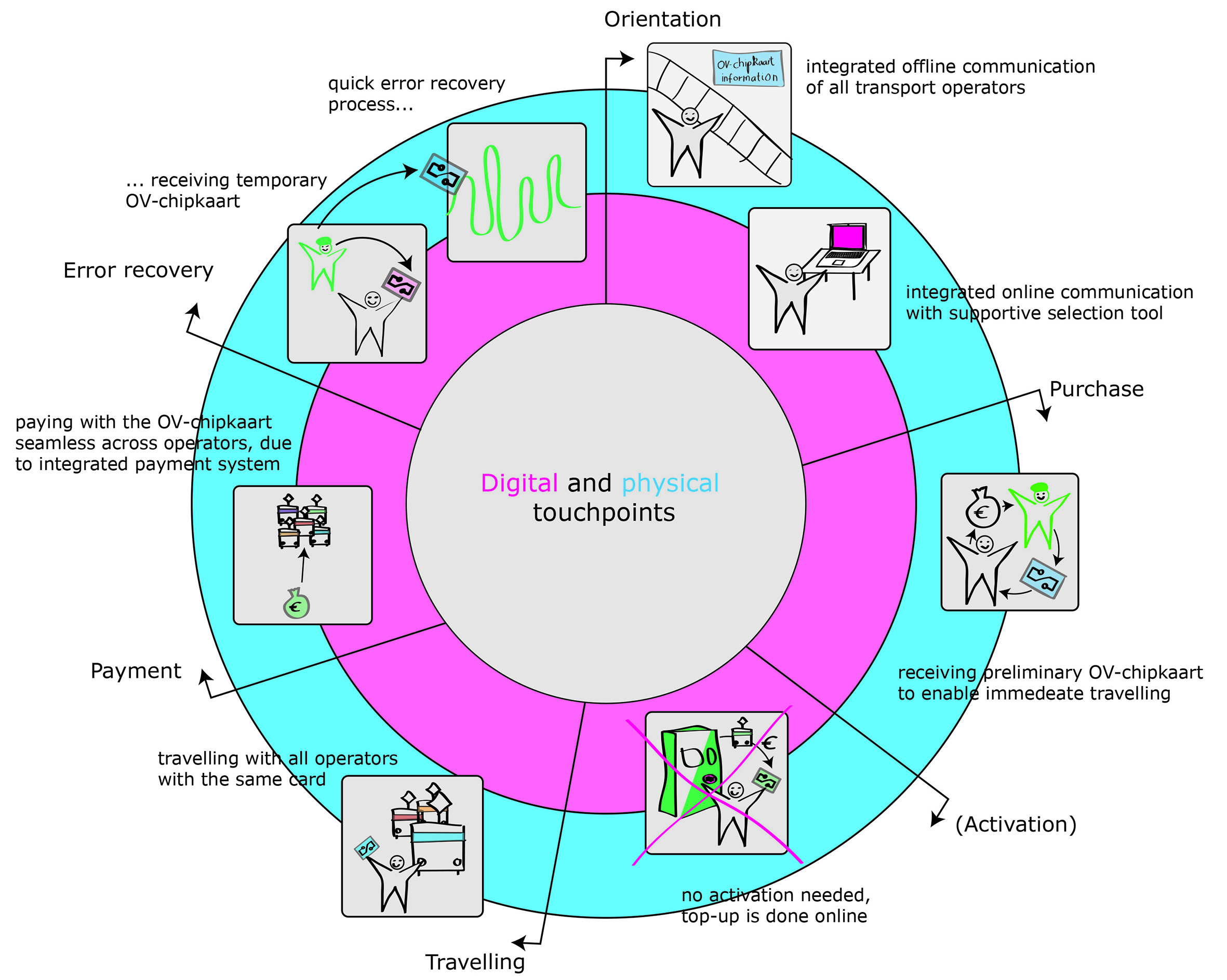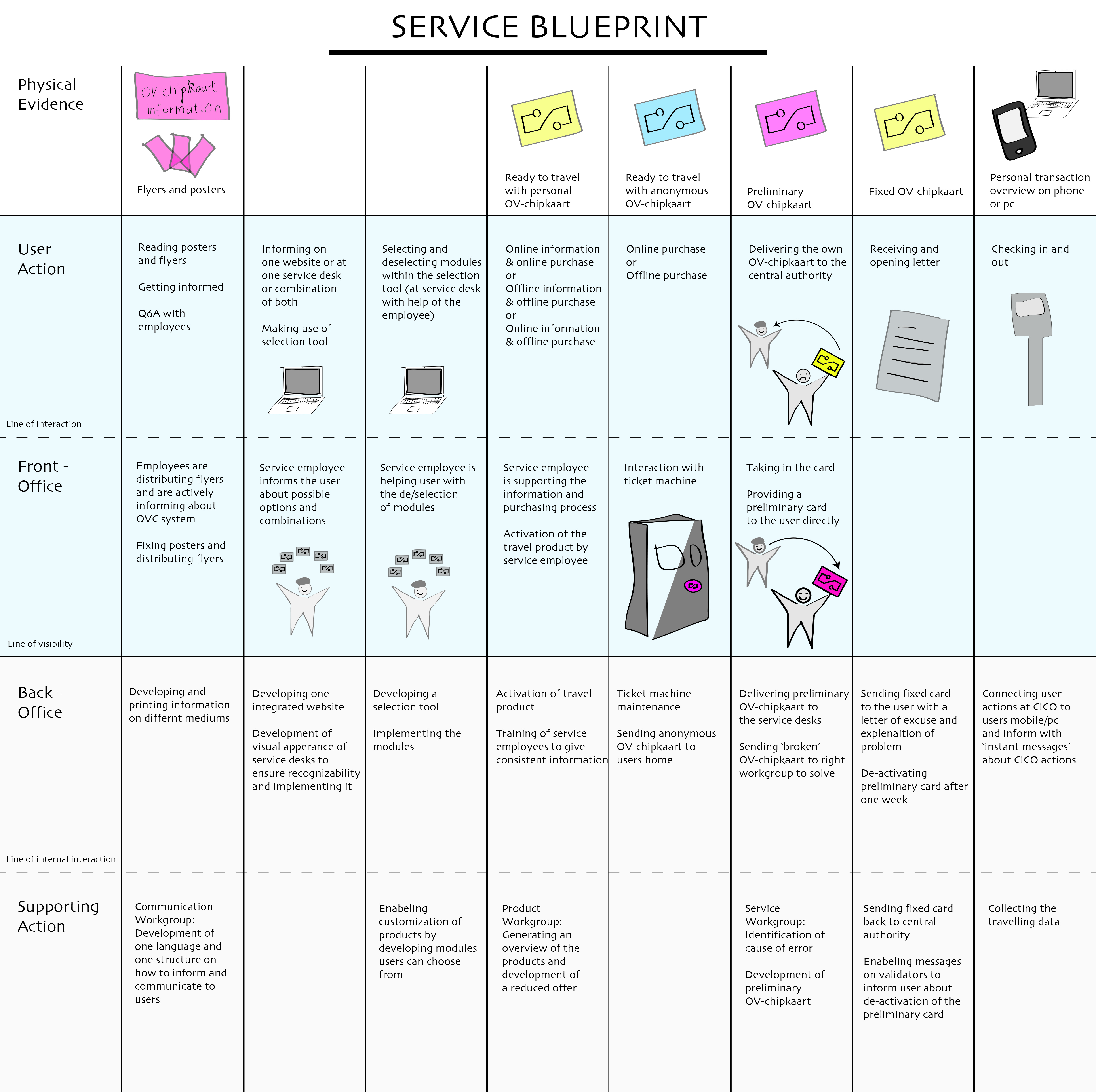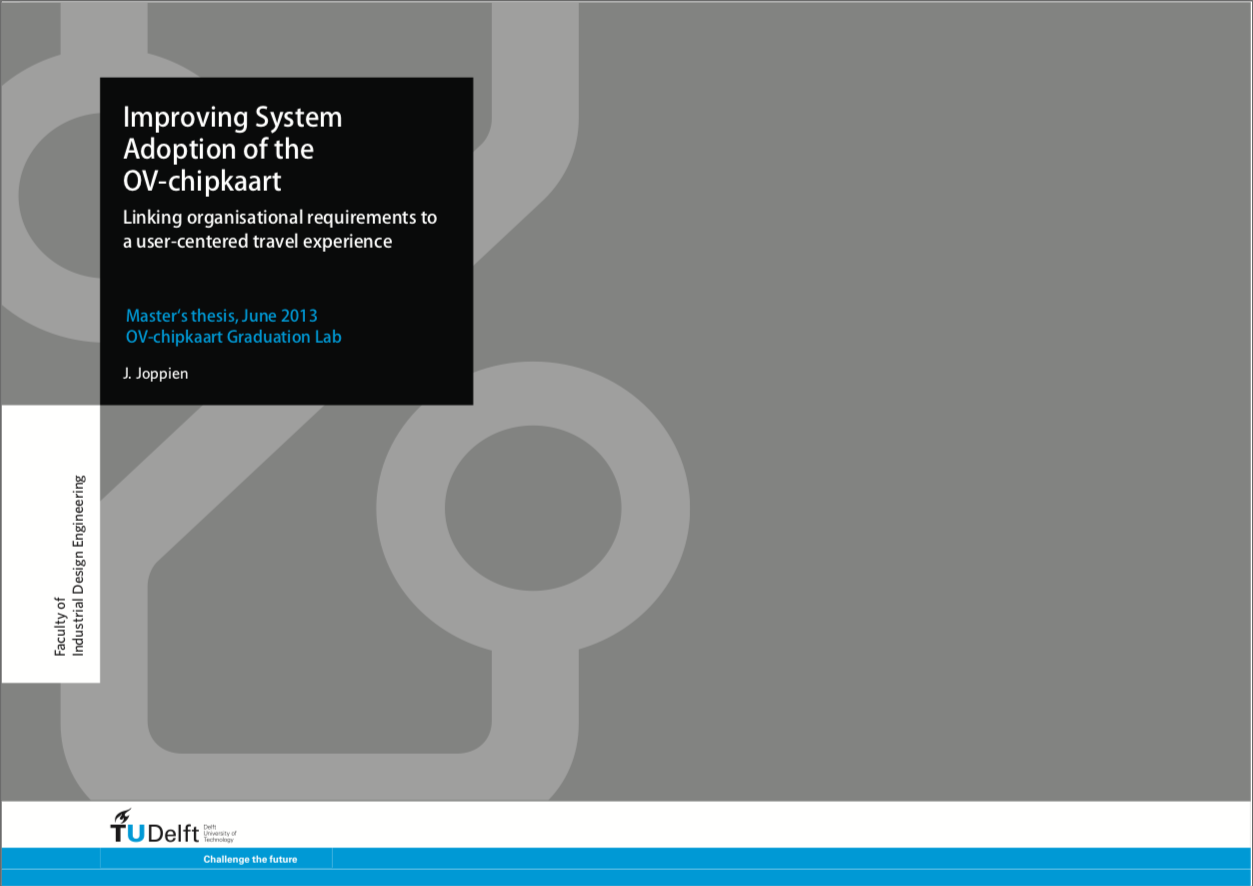Card acquisition and service provision
Card acquisition and service provision
Goal
To increase customer adoption of the OV-chipkaart by making it easier for users to:
- Acquire and activate an OV-chipkaart or travel products and
- Get assistance when they have problems or questions.
Analysis
To get a deeper and more detailed insight into the current usability issues in this area, the following usage studies have been performed:
- Workshop in which user expectations about OV-chipkaart acquisition were matched with the actual procedure;
- Interview on and observational study of how people who did not yet own an OV-chipkaart went through the process of acquiring one;
- Questionnaire about the motivations travellers have to chose a personal or an anonymous OV-chipkaart.
Goal
To increase customer adoption of the OV-chipkaart by making it easier for users to:
- Acquire and activate an OV-chipkaart or travel products and
- Get assistance when they have problems or questions.
Analysis
To get a deeper and more detailed insight into the current usability issues in this area, the following usage studies have been performed:
- Workshop in which user expectations about OV-chipkaart acquisition were matched with the actual procedure;
- Interview on and observational study of how people who did not yet own an OV-chipkaart went through the process of acquiring one;
- Questionnaire about the motivations travellers have to chose a personal or an anonymous OV-chipkaart.
User requirements
From these user studies emerged the following user requirements:
- User should be informed better about how the OV-chipkaart works, where and how it can be acquired and about which travel products are available;
- There should be an online tool that helps travelers to chose the right travel product;
- Cards and travel products should be ready for use directly after applying for them. To reach this activation (of travel products) and initial top up (of credit) should be avoided and people should get a temporary personal OV-chipkaart directly after applying for one;
- To make travel in the train domain easier, single check-in/check-out should be implemented;
- Missed check-outs should be filled in automatically by the system;
- The difference between the anonymous and the personal OV-chipkaart should be clearer;
- The initial costs for the anonymous card should be lower.
Service design and organisational scenarios
Based on user involvement an application procedure and helpdesk were developed that are in line with traveller needs. Subsequently three organisational scenarios were drafted for implementing the application procedures and new helpdesk (see image at the top):
- The platform: a decentralised approach in which a the OV-chipkaart offers transport operators a technological platform on which the operators implement a version of the OV-chipkaart that is optimised for them;
- The polder: In this scenario the interaction with the system becomes more coherent and easy to use because of the introduction of a facilitating party that tries to come to an agreement with all participating parties;
- The authority: In this centralised approach one directive authority makes sure that all user experience aspects of the OV-chipkaart are easy to use and coherent.
The user preferences, organisational scenarios and the links between them were evaluated with experts from the parties involved in this project (and also a number from other parties). They generally agreed that the proposed user experience was a desired situation and the authority-model was described as the most probable organisational scenario to implement the desired user experience. However, it was also mentioned that input and influence by the transport operators was a necessity, and thus elements of ‘the polder’ scenario were added. This final scenario is referred to the ‘balance of powers’.




